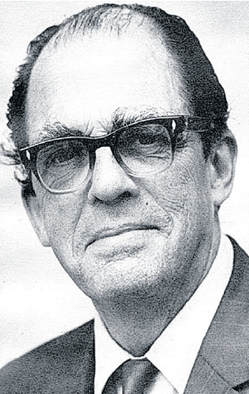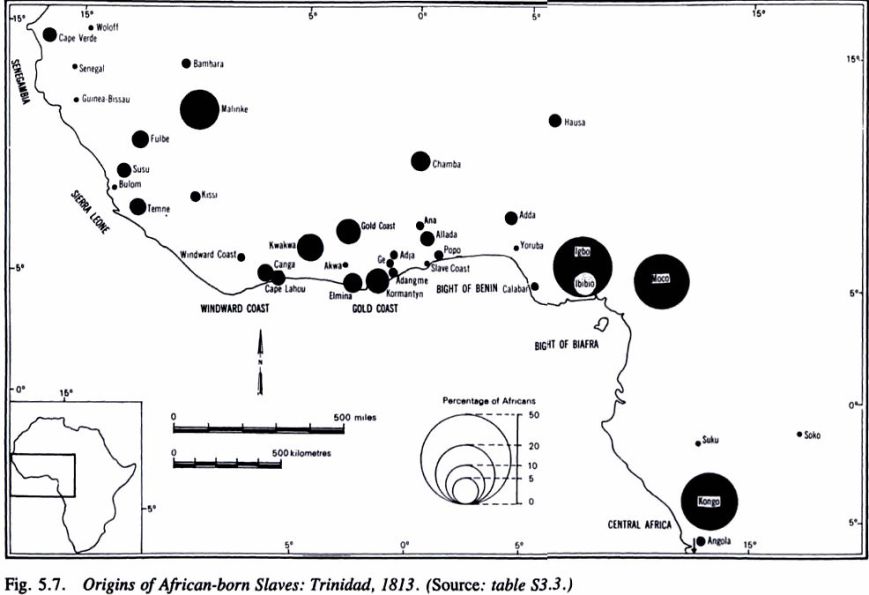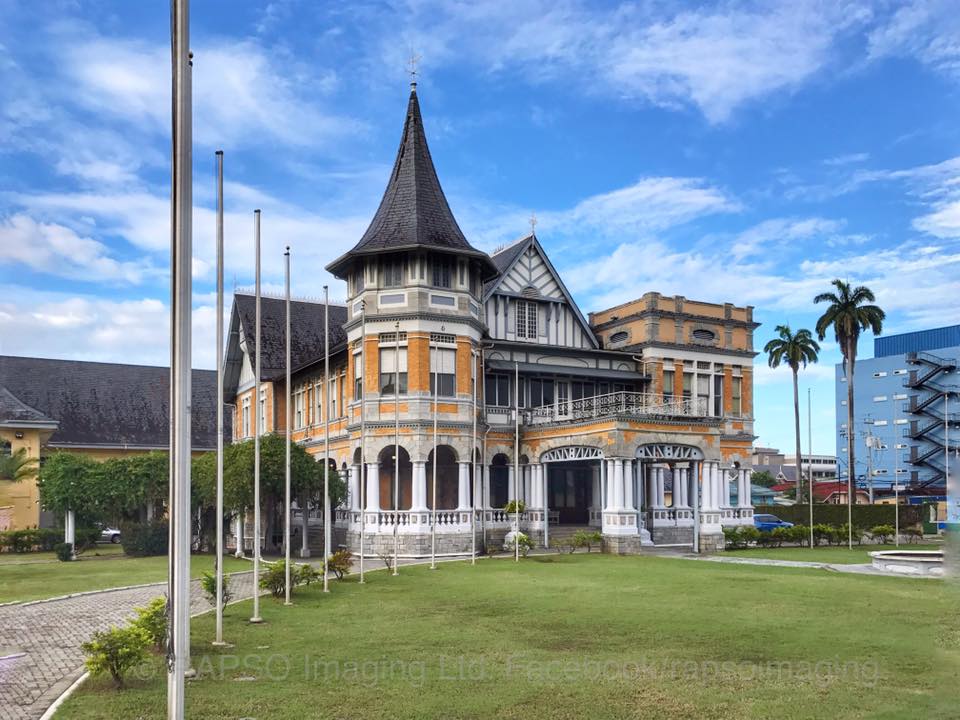|
I came across this interesting piece which speaks about the places from which the slaves came from. If you are interested in learning more, click on this link HERE
0 Comments
Knowsley, Queens Park Savannah South. It was built by WIlliam Gordon Gordon in 1904. The structure is of yellow brick from ballast used for ships arriving in Trinidad and hand hewn stone from Laventille quarries. Source: Virtual Museum of T&T
Trinidadian soprano Jeanine De Bique joins Chineke! to perform 'Rejoice greatly' from Messiah by Handel. Enjoy Trinidad born Noel Smith is the grandfather and hero of Sloane Stephens, the 24 years old who defeated Venus Williams in the US Open Semi Final to gain a spot in Saturday’s All American Final against Madison Keys.
Smith, who turns 92 years old today, was born in Trinidad as one of 13 children and earned a scholarship to Howard University where he studied Medicine and set his family on course to a better life. “My hero is my grandpa because he’s the best person who ever lived on this planet. I love him so much and he taught me everything that I know." "He taught me how to read, how to garden, how to plant, how to cook, how to make bread, the colors of the rainbow, everything." “Every Sunday we FaceTime on his iPhone 6 Plus. Our talks aren’t about tennis, but he told me that I need to keep my racquet parallel to the net at all times." Sloane was born in Plantations, Florida to Sybil Smith who became the first African-American female to Sloane Stephens' epic comeback is complete. Stephens, who has jumped more than 900 spots in the world rankings in a month, is now a grand slam champion, winning the US Open 6-3, 6-0 against No. 15 seed and fellow American Madison Keys at Arthur Ashe Stadium in Flushing, New York.be named First Team All American in Division 1 history. Her father was professional football player, John Stephens who was killed in a car accident in 2009 Check out this video of her chatting with her grandpa. Click here Source: CNN and 96.1 WEFM  NASA mathematician who calculated the trajectory of the Apollo 11 mission .Katherine Johnson (born Aug. 26, 1918) Johnson was a physicist, space scientist and mathematician who played a major part in the early days of the space program. Johnson attended West Virginia State University, and in 1934 she earned a bachelor’s in French and mathematics. Her mentor was Dr. W.W. Schiefflin Claytor, the third African-American to earn a Ph.D. in mathematics. Claytor created a special course focusing on analytic geometry just for Johnson. In 1940, she attended West Virginia University to further her studies. She dealt with the early application of digital electronic computers at NASA. Johnson was known for her mathematical accuracy in computerized celestial navigation. She was responsible for calculating the trajectory for the 1969 Apollo 11 flight to the moon. Essentially, she was a human computer. What was school like for a child growing up in the 1950s to the 1970s?
Life in primary Schools was so very different 50 to 70 years ago. There were no computers, CD players, gel pens or markers. Taking care of the schoolhouse was everyone’s job. Can you imagine studying in a tiny one-room schoolhouse, writing out lessons on a chalkboard slate? Does these photos provoke any childhood memories of school days long ago ? Source: Virtual Museum of T&T  A Trinidadian woman was among the honourees at this year’s edition of BET’s Black Girls Rock. Natalie Wilson and her sister-in-law Derrica Wilson were among the list of honourees on August 22 which included stars such as Issa Rae of the hit HBO series Insecure, Beyonce’s sister Solange, US Congresswoman Maxine Waters and singer Roberta Flack. Wilson and her sister-in-law were honoured as Community Change Agents for the work they do to find missing people in minority communities. The women are founders of the Black and Missing Foundation Inc, a non-profit organisation based in Washington DC. The Foundation was established in 2008 to bring awareness to missing people of colour, to assist families in finding their loved ones and to change the way missing minorities are treated in the media. Speaking to Loop on Thursday, Wilson, who was born in Princes Town and left Trinidad at the age of nine, said they were inspired to start the Foundation when a young lady by the name of Tamika Huston went missing in 2004 from Derrica’s hometown of South Carolina. “Her family struggled to get media coverage when she went missing and a year later Natalee Holloway went missing and her face and name dominated the news. We realised that 30 percent of people missing were of colour and we said why do we need to sit and wait for someone to do something about it, so we joined forces. Derrica is in law enforcement and I am in media relations,” she said. Wilson said since they started the Foundation, the number of people of colour missing has risen to 40 percent. She said many families do not know what to do when their family goes missing so BAMFI’s role has been to work with families, help them to file police reports upon which any assistance is based, assist families to get media coverage and educate families about personal safety. Asked what factors are influencing the increase in missing people of colour, Wilson cited mental health problems and online predators, among others. “Mental health is a serious issue in our community, we are missing because of domestic violence, sex trafficking seniors wandering away because of dementia. Recently we had a case of a 70-year-old man, Maurice Taitt, from Trinidad, who has dementia, came up for a family reunion and walked away from son’s home. No one has seen him since. “We know that Alzheimers is a problem but in the minority community, seniors play an important role and there is a sense of guilt to send them away so we take care of them ourselves. In our community we have an issue asking for help cause we are innately wired to do it ourselves,” she said. The increasing use of sexual predators’ use of social media to groom young girls and boys is a big contributing factor. “The predators have become savvy and they are connecting to young people online. There was a young girl from Baltimore who met a guy online and he picked her up at school and took her to DC where she was sex trafficked for six days. Fortunately, an Uber driver saw her poster on our site and we contacted the FBI and they rescued her. “We use social media to bring awareness to the missing and they use social media to groom them. What we say to parents all the time is that if your child is on social media you need to monitor what they are doing and educate them to let them know the dangers. We encourage them to create fictitious accounts and engage with their children, befriend them and see what information they will give up,” she said. To date, BAMFI has assisted in finding 200 people, not all of whom were found alive. BAMFI offers its services at no cost and relies on funding from donors and fundraisers. The Foundation hosts a walk/run drive which this year raised US $20,000. While there is a small team, the Foundation relies on volunteers as well. Asked about the challenges they face, Wilson said changing the mindset of the community on issues such as sex trafficking is one of the biggest obstacles. “In our community, we do not believe in sex trafficking in our backyard. People don’t believe it is happening to them and people aren’t paying attention until it becomes personal. Even with law enforcement, they need to be retrained. The police aren’t rated on the number of missing people found so it is not taken seriously. Missing children are classified as runaways but they aren’t always runaways and if they are what are they running away from and to?” she questioned. Improving media coverage, the lack of which, she acknowledged, is driven by race, is another one. “We have to change laws, we have to more vigilant and hold elected leaders accountable to help our communities.” Speaking about the honour bestowed on them at this year’s Black Girls Rock, Wilson said it was an amazing experience. Beverly Bond, creator of the show which is aimed at honouring the contributions of Black women, has been a friend to their organisation, she revealed. “We are grateful that it was presented on a national scale so people who didn’t know are now aware. We have seen an uptick in our social media platforms, more sharing of our missing people. We want Black and Missing to be a household name so when someone goes missing we are one of the organisations on the list." Wilson said they have been strategising on plans to expand their offices to the cities that have high numbers of missing people, among them Atlanta, Detroit and Chicago. Trinidad and Tobago is also on her list. Although she hasn’t been home in recent years, Wilson tries to keep abreast of news here and is aware of an increase in missing people especially young girls. Wilson listens to Machel Montano’s “Happiest Man Alive” to pick her up when she’s down. The song, she said, makes her feel connected to the land of her birth and gives her strength to go on. “Trinidad is who I am,” she said. (Source: The Loop) The first recording of the National Anthem of Trinidad and Tobago  Castagne led an amazing life and was a prolific composer though not one whose other work is appreciated as much these days. Born in Guyana, he spent his formative years in Trinidad and at times he spent substantial parts of his career in England, Canada, Barbados, even the United States. He was a prolific composer of a number of different styles of music. He grew up in Woodbrook and joined the government Customs office in September of 1939, but with World War II joined the Army and stayed for eight years. He started as a private and by the time he left was a captain, married with three children. For a time, he moved the family to Canada but his wife disliked the long and cold winters so they moved back after a couple of years. Castagne worked for Radio Trinidad from 1949 to 1952. He was first a script writer, then a programme administrator and finally the station manager. He was very proud that while there he pushed through a provision that calypsonians got paid for the live broadcasts. He later worked for Angostura until 1960 when he went to England. During this time, he was very involved with music. He had a combo called the Crazy Kats with Syl Dopson and played guitar for La Petite Musicale. He was also very involved with Carnival, Carnival Queen shows and the scripting and staging of Dimanche Gras. Castagne’s first song, Kiss Me for Christmas, which was written in 1949 and recorded by Dot Evans, was dedicated to his wife. It has a long history of being covered and is still a popular choice on the radio during the Christmas season. During the height of the calypso craze he wrote Dance the Calypso which boldly stated, “No mo Rock and Roll/Now de Calypso got control.” Castagne was a noted critic of “pseudo-calypso” in the US and warned against it being performed in a plodding 4/4 beat rather than in the original rhythm. With the plan for the West Indian Federation, he found another topic for a song. He recounted to Errol Sitahal in a Banyan Archive interview, “As soon as they started to talk about the Federation site, I knew I wanted to get involved in writing a national song. I didn’t think in terms of the anthem… The words took me a long time, two years. I knew what I wanted to say, the sentiment I wanted to get across.” It was submitted as a Song for Federation and his song was picked as one of two from Trinidad. When the Federation collapsed, he shelved the song. When things were moving toward T&T’s Independence, Castagne was based in London working for the High Commission. When he learned about a competition for the anthem, he took his song off the shelf and revamped the lyrics to focus on the country’s independence rather than as part of a number of federated states. The most notable change was “forged from the depth of slavery” becoming “forged from the love of liberty.” One of his greatest successes was writing a calypso many hold up as a classic and it happened quite by chance. He recalled in the same Banyan interview how he came to write The Iceman for Lord Melody. “There was a guy in Port-of-Spain selling ice shouting, ‘Ice Ice’.” Castagne liked the phrase and singing it when he came home that night. His wife told him he had a good start of a calypso so he would start to notice the calls from other street vendors. He took it to Lord Melody and the tune turned out to be one of Melody’s biggest hits. He also wrote calypsoes for Lord Cristo, a Christmas calypso for the March of Dimes Quartet and the Dixieland Steel Orchestra recorded his piece Treasure Island on their first album. He and Freddie Kissoon worked on King Kobo, an unfinished musical. While working as the Public Relations Officer for the High Commission in London, Castagne wrote a number of cricket calypsoes during this time and also worked with BBC radio. After several years in London, Castagne moved to Barbados and for 16 years ran an advertising business. He personally wrote a lot of jingles that proved quite successful. He did a couple Carib Beer commercials including one sung by Relator. Finding recording studios to be better in Trinidad, he was known to fly over on the weekend for his jingle sessions. When he was there, he also wrote Barbados, I Love You and Let’s Join Hands when Rotary had an event to have a human chain holding hands around Barbados. In all, he is reported to have written over 150 songs besides numerous jingles but only a handful were recorded. He never pretended he could sing but had a good hand at composing he thinks in part because he had a very vivid mind. Castagne had a penchant for love ballads, holiday and special events songs—he said he thought he was the only one to write a song about a mother’s birthday! Patrick Castagne was well celebrated in his lifetime first receiving on MBE in 1962 from the Queen and the Chaconia Gold by Trinidad’s government in 1994 which cited both his contribution in music and in social volunteer work. We celebrate him today noting that whatever troubles the country may face may we aspire to his credo, “Here every creed and race, Find an equal place, And may God bless our nation” YOUTUBE ON CASTAGNE Kelwyn Hutcheon - Kiss Me For Christmas https://www.youtube.com/watch?v=NuYJJOoEx20 Valerie Sheppard - Kiss Me For Christmas https://www.youtube.com/watch?v=pImpRpWcYeY First Recording of The National Anthem of Trinidad And Tobago as rendered by Mr. Garth Gibbs. https://www.youtube.com/watch?v=gL1XAKUtp5o B-A-R-B-A-D-O-S I Love You - Lord Sivers & The Fantasies with The Tropical Islanders and Phil Britto https://www.youtube.com/watch?v=2XnmehHAmEs The Woodpeckers - “Woodpeckers Xmas Party” https://www.youtube.com/watch?v=kRIFuMyWo-k Jolly Boys, “Nimble Like Kimble” https://www.youtube.com/watch?v=fVyEJahx1-8 Juliet Eckel,The Spirit of Christmas https://www.youtube.com/watch?v=VpnagIUc8OM BIBLIOGRAPHY Play Trinidad’s Sensational Calypso Dance: Basic Steps of the Intriguing “calypso” Illustrated and Fully Explained in a Manner that Makes it Easy for Dancers from Nine to Ninety to Do this Colorful Dance, B. W. I. Guardian Commercial Printery, 10 pages, 1957 Patrick Castagne, This is Calypso, Music Journal XV (January 1958), 32-33ff. and Chronicle of the West India Committee, London. Vol. 77, No. 1377, Oct. 1962. p. 518-519. illus INDEX of COMPOSITIONS An Orchid for You Barbados I Love You Breakfast In Bed Caribbean Sunset Dance the Calypso Danger Man The Fugitive Going Well, Happy Birthday, Mom Happy New Year Hi-Voltage I Want a Hula Hula Girl I Want To Love You The Iceman Kiss Me For Christmas Little Shepherd Boy Lucilla Millie the Macaw From Guyana Nimble Like Kimble Oh Loving God Polly Carr Rejoice It is Christmas The Sky-Jackers (Calling Habana) Treasure Island The Trinidad & Tobago National Anthem Woodpeckers Xmas Party |
T&T news blogThe intent of this blog is to bring some news from home and other fun items. If you enjoy what you read, please leave us a comment.. Archives
May 2025
Categories
All
|









 RSS Feed
RSS Feed